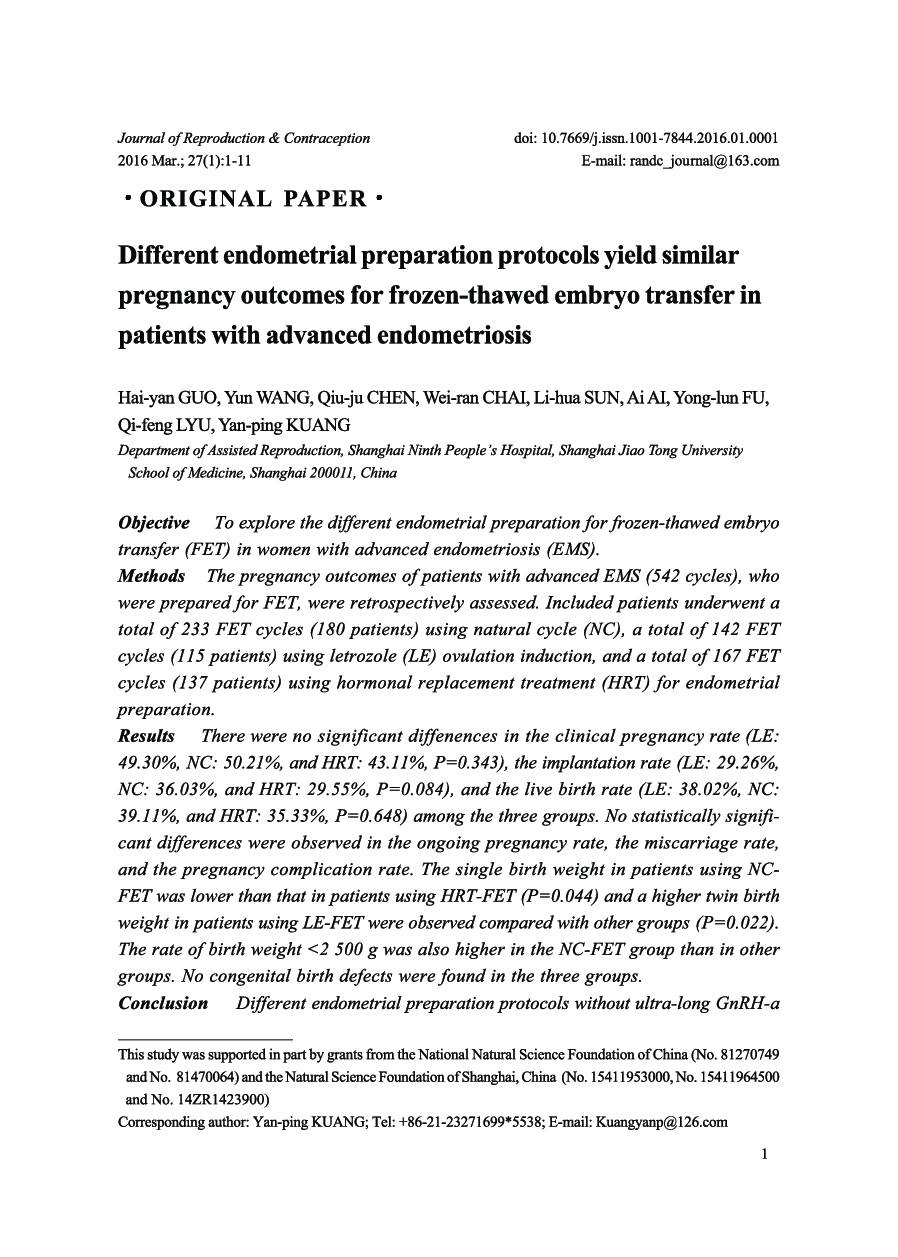| Article ID | Journal | Published Year | Pages | File Type |
|---|---|---|---|---|
| 3963894 | Journal of Reproduction and Contraception | 2016 | 11 Pages |
ObjectiveTo explore the different endometrial preparation for frozen-thawed embryo transfer (FET) in women with advanced endometriosis (EMS).MethodsThe pregnancy outcomes of patients with advanced EMS (542 cycles), who were prepared for FET, were retrospectively assessed. Included patients underwent a total of 233 FET cycles (180 patients) using natural cycle (NC), a total of 142 FET cycles (115 patients) using letrozole (LE) ovulation induction, and a total of 167 FET cycles (137 patients) using hormonal replacement treatment (HRT) for endometrial preparation.ResultsThere were no significant diffenences in the clinical pregnancy rate (LE: 49.30%, NC: 50.21%, and HRT: 43.11%, P=0.343), the implantation rate (LE: 29.26%, NC: 36.03%, and HRT: 29.55%, P=0.084), and the live birth rate (LE: 38.02%, NC: 39.11%, and HRT: 35.33%, P=0.648) among the three groups. No statistically significant differences were observed in the ongoing pregnancy rate, the miscarriage rate, and the pregnancy complication rate. The single birth weight in patients using NC-FET was lower than that in patients using HRT-FET (P=0.044) and a higher twin birth weight in patients using LE-FET were observed compared with other groups (P=0.022). The rate of birth weight <2 500 g was also higher in the NC-FET group than in other groups. No congenital birth defects were found in the three groups.ConclusionDifferent endometrial preparation protocols without ultra-long GnRH-a down-regulation for FET yield similar pregnancy outcomes in patients with EMS. A tailored endometrial preparation protocol should be recommended according to different patients’ situation.
